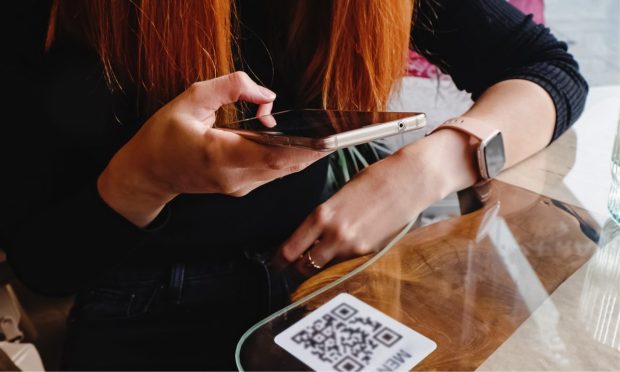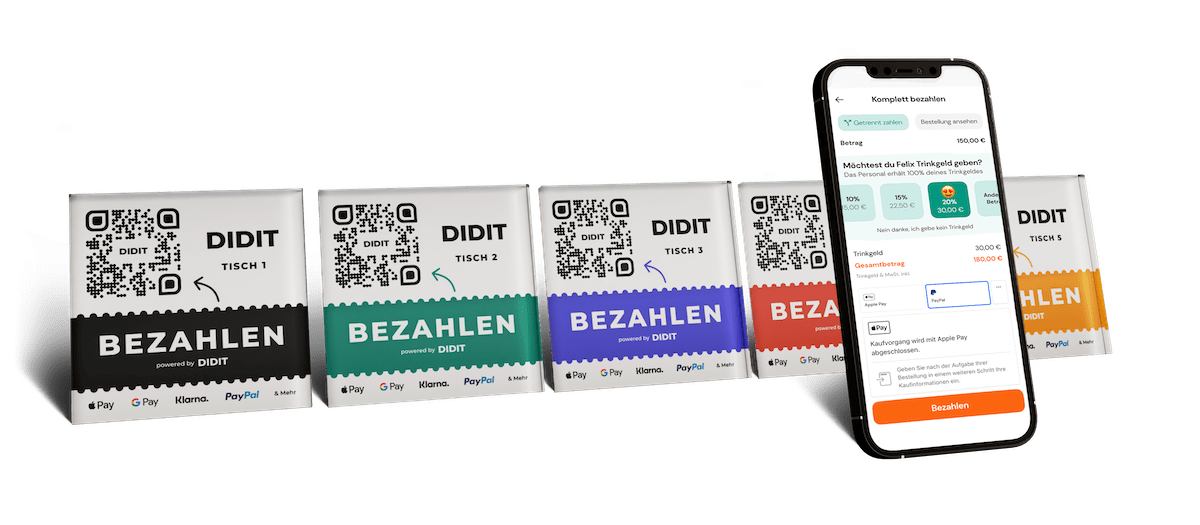German Restaurants Find QR Codes Source of New Data Insights

“When was the last time you had an amazing checkout experience at a restaurant?”
This was the question Moritz Heininger, founder and managing director at Berlin-based FinTech DIDIT, posed to PYMNTS in an interview.

Moritz Heininger
Certainly, checking out of a restaurant can be an awkward process for customers. It’s one thing if the bill is split evenly, but if individual guests want to pay different amounts, things soon get complicated.
For restaurant staff, closing tables can be time-consuming, not to mention having to navigate large groups of diners who may each want to pay different amounts using different methods – a process that can take up to 20% of waiting staff’s time, Heininger explained.
For both restaurants and their customers, QR code-based payments can solve many of these problems, he said, adding that the technology can “make the checkout experience fun” and even create new opportunities for businesses.
Read on: Consumers Want Payments Choice on the Menu When They Eat Out
In many Asian countries, this payment method has been growing in popularity for years, Heininger noted, pointing to the example of China’s Alipay, which introduced the feature on its mobile wallet in 2011. By 2016, the addition had catapulted the firm’s mobile payments to account for 71% of all transactions processed.
The technology hasn’t gained the same traction in Europe, however, and for many individuals, their first experience of scanning a QR code was only during the pandemic when it was widely deployed to boost contact tracing and helped to reduce the need for physical proximity.
Learn more: Deep Dive: Exploring The Varying QR Code Adoption Rates Around The World
Retaining the Human Touch
In the restaurant industry, QR codes in their most basic form are used to simply direct diners to an online menu. While this has some advantages for restaurants, it lacks the interactivity of more sophisticated solutions like “self-ordering” whereby customers can place an order using interactive menus.
Self-checkout, another use case for QR codes in restaurants, enables diners to scan a code to make payments, reducing the need for waiting staff to come to the table which in turn leads to a smoother checkout experience in most instances.
Overall, there is less demand for self-ordering than there is for self-checkout, Heininger said, although the firm plans to introduce the service by the end of this year.
He added that while restaurants with fast customer turnover have the most to gain by removing waiting staff from the ordering process — and “personal contact doesn’t matter so much” — many restaurants prefer to retain the human touch that comes with in-person ordering.
More on this: Restaurants Seek to Balance Full-Service Flourishes With Digital Ease
Emphasizing the point, he added that some of the restaurants DIDIT works with have expressed an interest in QR-based reordering, in which the first order is always taken by a waiting staff while a QR code is also provided on the table for guests to order extras like drinks throughout their meal.
QR Payments Unlock Brand Value
As well as helping to deliver a more frictionless experience for customers paying their bills, Heininger said that mobile-based self-checkout has some other advantages for restaurants that DIDIT is looking to capitalize on.
First, he noted that when restaurants introduced the system, they saw an increase in the amount people tipped. In fact, although there are options to customize how much tip is added to a bill on the DIDIT web app, people stuck with the 10% default option, which is the norm in Germany. Counter this to other payment methods, where the tendency is to round up out of convenience and results in lower value tips for staff.
Another area where DIDIT has sought to optimize the payment process for restaurants is by incorporating a review system. As Heininger explained, during the self-checkout process, customers are asked to leave a review. If they select three stars or less the review remains in-house, but if they select four or five, they then have the option to post the review on Google Maps.
Finally, he added that because customers have the option to receive their receipts via email, self-checkout technology is a powerful tool in building customer loyalty and a useful way for restaurant brands to grow their mailing lists, which can be difficult otherwise.
See more: QR Codes Keep Gen Z Diners Coming Back
Basically, the more detailed customer information that can be gathered through the review system and email address collection, the more restaurants using DIDIT can boast “marketing capabilities that only eCommerce stores would normally have.”

Related: Checkout Data Helps Icons (and Upstarts) Flex Brand Muscle
For all PYMNTS EMEA coverage, subscribe to the daily EMEA Newsletter.
